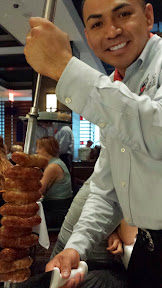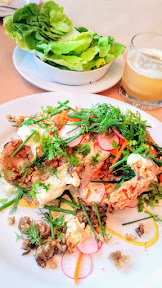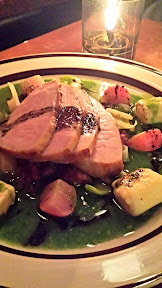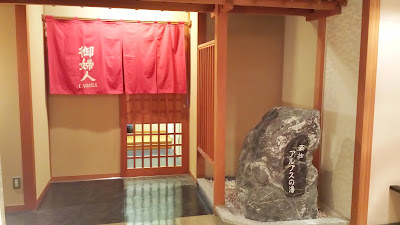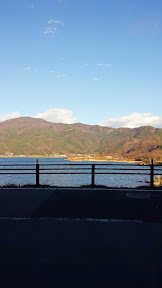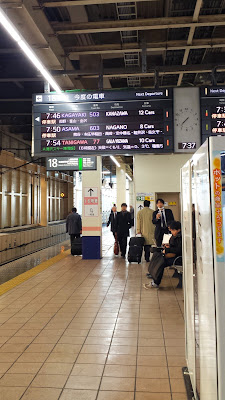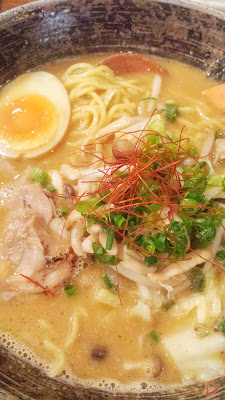It’s almost March (tomorrow! Where did February go, it flew by, even with the extra day!), which means it’s time for Portland Dining Month 2016 to begin! This is PDX Dining month’s 7th year. I’m glad to see they continue to make it a whole month long – did you know other cities that hold this type of special dinner menu special for a city last just a week? But we have all month – every day of the week for a whole 31 days! So I’m not sure I can accept your excuse on why you couldn’t make it to a single one all month long.
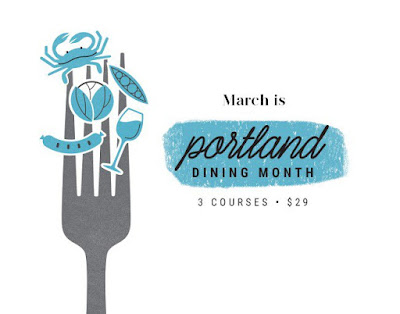
This year, a record-setting 122 restaurants will offer three-course dinners for $29 during Portland Dining Month 2016. Some restaurants are very specific on what your 3 courses will be – others provide options for each course, including sometimes vegetarian options. Still more may offer extra courses, or even a beer pairing or some restaurants awarded for their Oregon wine list may offer $15 wine pairings for each course. Pretty much all restaurants will always have their regular menu as well, so not everyone at the table has to eat the $29 prix fixe, so make it a date night, or family night, or catch up with friends.
When you visit, don’t be shy about asking for the Portland Dining Month 2016 menu if you don’t get it when you are seated as it may be a separate menu in addition to the regular menu.


My visit to Laurelhurst Market for Portland Dining month in 2015
You dining out is also doing good for the world, not just for your tastebuds and as a reason to get together with others. Portland Dining Month is partnering with Oregon Food Bank to make a donation for every reservation booked through OpenTable links from the Portland Dining Month official website. You can see a list of OpenTable restaurants participating here for which you can make reservations online. For this blogpost, I used the same links if OpenTable was available for my top PDM picks for your convenience.
I usually will pick restaurants based on food options in their 3 courses that sound good, and then look at their regular menu to see if it is a good deal. It never ends up being less than $29 to order them a la carte if available, and some dishes are special for Dining Month, or you are getting an extra tremendous value on the price. Try upscale restaurants that have always been in your wishlist now like Imperial (OpenTable rez avail), Paley’s Place (OpenTable rez avail), Higgins (OpenTable rez avail), Laurelhurst Market, Little Bird (OpenTable rez avail), the classic Ringside Steakhouse on Burnside (OpenTable rez avail)- whether it be the and such where usually again the entrees alone are in the mid 20 dollar range already.
Above, Portland Dining month options from Fogo de Chao (OpenTable rez avail), Little Bird (OpenTable rez avail), and Park Kitchen (OpenTable rez avail) – food shown is from previous years
Also on the list are hot spot restaurants like relatively new on the scene South American cuisine at LeChon (OpenTable rez avail), and already raved about Russian darling Kachka, smart Asian fusion smallwares (OpenTable rez avail), French fun at St Jack which is offering a vegetarian option too (OpenTable rez avail), and more!
Now is the time to visit that restaurant you’ve wanted to go to but haven’t been yet! You should definitely check out the 3 course menu specials each one is offering to help narrow down from the bounty of choices.
I’ve mentioned already some of my top picks for Portland Dining Month 2016 above for you to check out. Here below are specifically the ones for consideration on my own personal To Eat in March list that stood out to me based on their menu options particular calling to me. Check back as I plan to go to at least one PDM dinner a week and recap them as I go.
- You have no reason to keep saying you haven’t been to Ataula for Catalan (Spanish) cuisine by James Beard 2016 nominee for Best Chef Northwest Jose Chesa yet with this deal. The first two tapas together are usually worth $19 and a full version by itself of the third course dish is usually $34
- First course: Pulpo octopus carpaccio with sun-dried tomato, Parmigiano-Reggiano, pine nuts and pickled cipollini onions
- Second course: Tortilla de patatas con bellota with farm eggs, confit potatoes, onions and 4-year cured ibérico ham
- Third course: Mini rossejat negre with toasted noodles, calamari, squid ink, sofrito and harissa aioli
- Fourth!! : Doughnut, brioche, spiced sugar
- Pono Farm Soul Kitchen with its mix of Japanese influence and sustainable Northwest meats from Pono Farm have been on my wish list for a while, and I finally am going to visit them in March. Their options for the Portland Dining Month 2016 menu include three options for first course or second course which sound really original in concept. (OpenTable rez avail)
- First course (choose one): Roasted golden and red Chiogga beet salad with wild greens, cherry-beet dressing and horseradish cream or Tempura soft-shell crab with hibiscus glaze, persimmon and pear salad with orange vinaigrette or Kakuni: 10-hour braised pork belly with sweet soy glaze, soft-boiled egg, apple and miner’s lettuce salad
- Second course (choose one): Market carrots, carrot purée, carrot vinaigrette, chrysanthemum, basil and walnut pesto or Mary’s free-range grilled chicken with chanterelles, frisée, black truffle sauce and red wine demi-glace or Sweet chili pork chop with roasted apples and mizuna salad
- Third course: Sake gelée of exotic fruits, yuzu froth and passion fruit cream
- Willow is just opening in March right now, but they are participating in Portland Dining Month! Pretty brave to open to that guys. They won’t have a regular menu available though – this is their only menu for the month before shifting to their 6 course tasting menu in April, so here’s your chance to try them out on a smaller scale. Their food choices are
- First course: Cream of celery root soup with charred roots and thyme
- Second course (choose one): Short rib steak with glazed vegetables, potato and sauce bordelaise or Cauliflower steak with glazed vegetables, potato and sauce bordelaise
- Third course: Chocolate cake s’more with meringue and graham cracker
- What I really like about Clyde Common‘s options is how it’s a mashup of Northwest goodness with a little bit of a hint of Filipino influence, which is a unique perspective. And those lumpia, which I’ve had before, keep bringing me back, along with the cocktails. I’ve been visiting the Clyde Common bar for years, but since Chef Carlos Lamagna took over the kitchen I’ve been going more often for lunch and dinner because the food options are now just as compelling as their award winning cocktail program at the bar. (OpenTable rez avail)
- First course:Pork and shiitake lumpia with house sweet and sour sauce and spicy greens (shown below is a multiple order plate of lumpia)
- Second course: Preserved ramp butter risotto with grana padano, chili oil and chicken chicharrónes
- Third course: Local bee honey panna cotta with chèvre whipped cream, mixed berry jam and candied pine nuts


- I really like how classic Northwest cuisine Park Kitchen gives you their famous chickpea fries and three options each for the other two savory courses that sounds really fascinating in its flavor combinations. (OpenTable rez avail)
- First course: Chickpea fries with roasted squash ketchup

- Second course (choose one): Ayer’s Creek barley with smoked beets and pomegranate or Blood orange with radish, pumpernickel and crème fraîche or Charred carrot with black olive, pecans and carrot tops
- Third course (choose one): Ayer’s Creek adzuki bean cake with braised collard greens and popcorn sauce or Blackened steelhead with cauliflower grits and watercress or Grilled Maupin Farm’s ham with Anthony’s garbanzo beans and green olives
- First course: Chickpea fries with roasted squash ketchup
- Go visit Biwa if my Tuesday Japan travel posts have given you a Japanese craving, as they are offering
- First course of Sashimi moriawase, a selection of today’s sashimi dishes, including ocean trout with Deschutes Black Butte Porter shoyu (usually this option alone is $26 on their regular menu!)
- Second course of Otsumami and kushiyaki, many small dishes of varied and delightful snacks and grilled skewers
- Third course of Smoky miso vegetable soup
- I love Aviary during dining month (ok, maybe every month. Chef Sarah Pliner is also a James Beard 2015 and 2016 nominee for Best Chef Northwest). Particularly for March though theiir dining month menu is always are a good deal (their entree usually is $23) and they always offer a special one off dish as part of their menu. And don’t forget their bread with bagna cauda is complimentary starter. I think pretty much every PDM every year I stop at Aviary! (OpenTable rez avail)
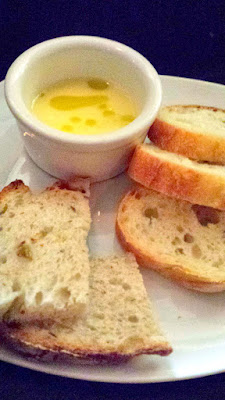
- First course (choose one): Braised beef cheek dumpling of egg yolk, jicama, cucumber and peanuts or
Prawn salad with snap peas, coconut, Cara Cara oranges, jalapeño and taro root crisp - Second course (choose one): Red cooked kurobuta pork short rib with rutabaga, enoki mushrooms, fish sauce and pickled Thai chiles or Pineapple curry with glazed skate wing, Manila clams, cranberry beans, maitake mushrooms and sea beans
- Third course (choose one): Pistachio dacquoise yogurt mousse and grapefruit sorbet or Chocolate cremeux cake with passion fruit and crispy rice
- First course (choose one): Braised beef cheek dumpling of egg yolk, jicama, cucumber and peanuts or
- Acadia, a New Orleans Bistro, is offering (photos are from a previous visit of the shrimp and sheepshead – which is a fish btw. I remember with that shrimp I went back to the bowl and spooned the sauce right onto my bread. If you haven’t been here yet, get yourself here as I am putting this on my list even though I’ve had these dishes before because they are just that good.) Treat yourself to some different flavors then the norm with the bright Creole cuisine here.
- First course of Louisiana barbecue shrimp with lemon, black pepper, white wine and butter
- Second course of Bronzed wild-caught Louisiana sheepshead with buttermilk cornbread puree, pickled beet relish and sauce meunière
- Third course of Creole bread pudding with salted whiskey caramel, whipped cream and pecans
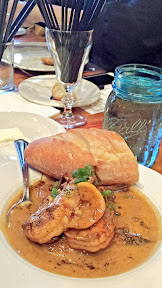

- You can get a hint of one of the best restaurants in Portland Castagna and its genius chef Justin Woodward (he was a finalist for the James Beard Awards last year, also a James Beard 2016 nominee for Best Chef Northwest this year and previous 2 years and nominated for Rising Star Chef of the Year in 2013) by visiting the more casual Cafe Castagna next door. Their entree of milk braised pork shoulder alone is usually $24. (OpenTable rez avail)
- First course (choose one): Classic salad with a butter lettuce rosette and royale dressing or duck fat fried potatoes
- Second course: Milk-braised pork shoulder with shaved Tokyo turnips
- Third course (choose one): Butterscotch pot de crème or Blackberry sorbet
- Accanto is the casual enoteca experience if you want Italian, and they are raising the bar by offering four courses for your $29- and two options for three of the courses. (OpenTable rez avail)
- First course (choose one): Paté di Campagna: pork terrine with whole grain mustard, charred bread and parsley or Tortino di riso con carciofi: risotto pancake stuffed with artichokes, pecorino and tomato jam.
- Second course (choose one): Zuppa di pasta e fagioli with cannellini beans, macaroni, tomatoes and vegetable broth or Insalata di Caesar with chicories, crispy ciabatta, parmigiano and boquerones.
- Third course (choose one): Strozzapreti con funghi e: ricotta, house pasta, soffrito with mushrooms, spinach, ricotta and soft boiled egg or Lombata di maiale balsamico: roasted pork loin, portabello and sundried tomatoes, escarole and balsamic demi-glace.
- Fourth course: Tiramisu
You can check out the official Portland Dining Month website to see those restaurants and filter by location, cuisine, or view the details of the courses that will be offered and options for courses if applicable.
What are you eyeing to enjoy for March and Portland Dining Month 2016?






